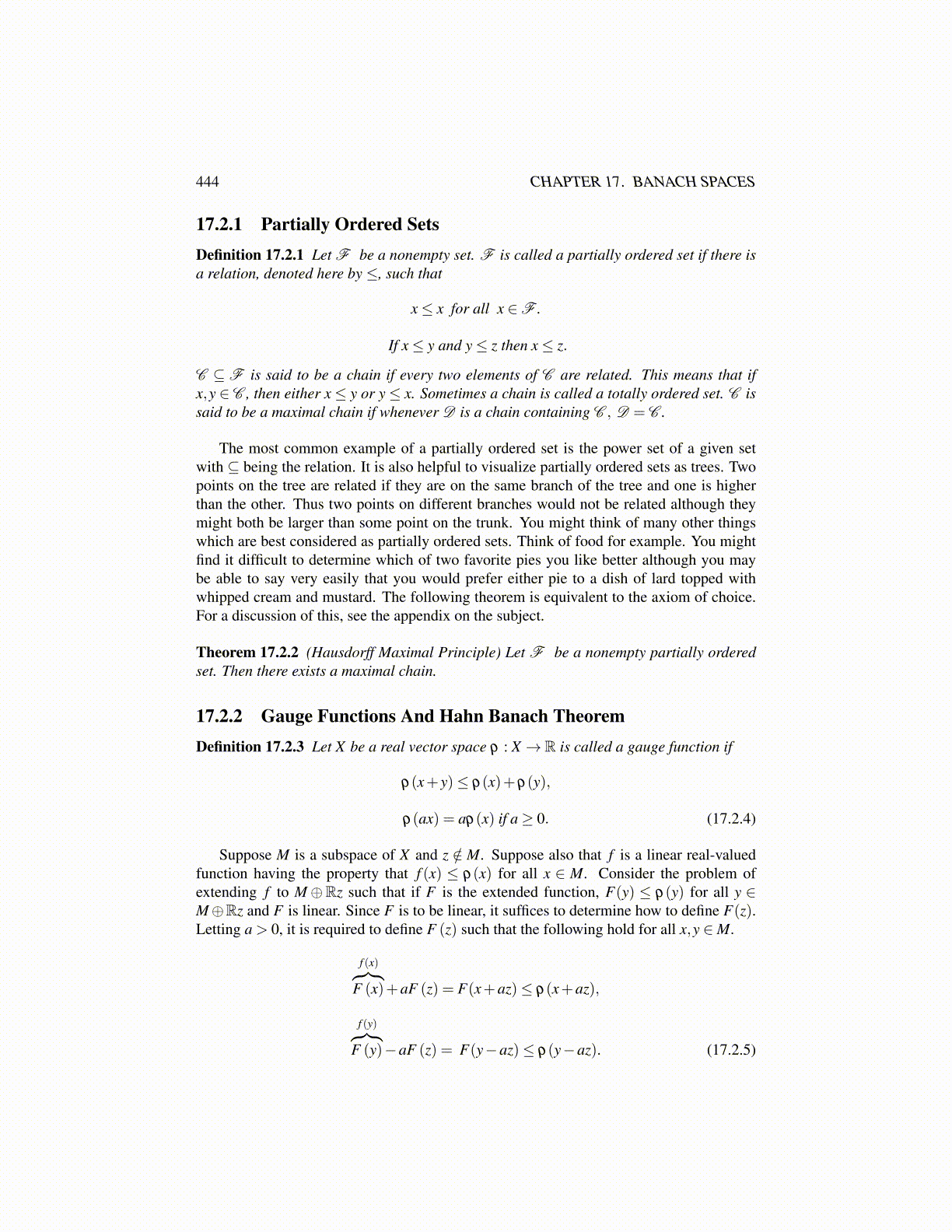
444 CHAPTER 17. BANACH SPACES
17.2.1 Partially Ordered SetsDefinition 17.2.1 Let F be a nonempty set. F is called a partially ordered set if there isa relation, denoted here by ≤, such that
x≤ x for all x ∈F .
If x≤ y and y≤ z then x≤ z.
C ⊆F is said to be a chain if every two elements of C are related. This means that ifx,y ∈ C , then either x≤ y or y≤ x. Sometimes a chain is called a totally ordered set. C issaid to be a maximal chain if whenever D is a chain containing C , D = C .
The most common example of a partially ordered set is the power set of a given setwith ⊆ being the relation. It is also helpful to visualize partially ordered sets as trees. Twopoints on the tree are related if they are on the same branch of the tree and one is higherthan the other. Thus two points on different branches would not be related although theymight both be larger than some point on the trunk. You might think of many other thingswhich are best considered as partially ordered sets. Think of food for example. You mightfind it difficult to determine which of two favorite pies you like better although you maybe able to say very easily that you would prefer either pie to a dish of lard topped withwhipped cream and mustard. The following theorem is equivalent to the axiom of choice.For a discussion of this, see the appendix on the subject.
Theorem 17.2.2 (Hausdorff Maximal Principle) Let F be a nonempty partially orderedset. Then there exists a maximal chain.
17.2.2 Gauge Functions And Hahn Banach TheoremDefinition 17.2.3 Let X be a real vector space ρ : X → R is called a gauge function if
ρ(x+ y)≤ ρ(x)+ρ(y),
ρ(ax) = aρ(x) if a≥ 0. (17.2.4)
Suppose M is a subspace of X and z /∈ M. Suppose also that f is a linear real-valuedfunction having the property that f (x) ≤ ρ(x) for all x ∈ M. Consider the problem ofextending f to M⊕Rz such that if F is the extended function, F(y) ≤ ρ(y) for all y ∈M⊕Rz and F is linear. Since F is to be linear, it suffices to determine how to define F(z).Letting a > 0, it is required to define F (z) such that the following hold for all x,y ∈M.
f (x)︷︸︸︷F (x)+aF (z) = F(x+az)≤ ρ(x+az),
f (y)︷︸︸︷F (y)−aF (z) = F(y−az)≤ ρ(y−az). (17.2.5)